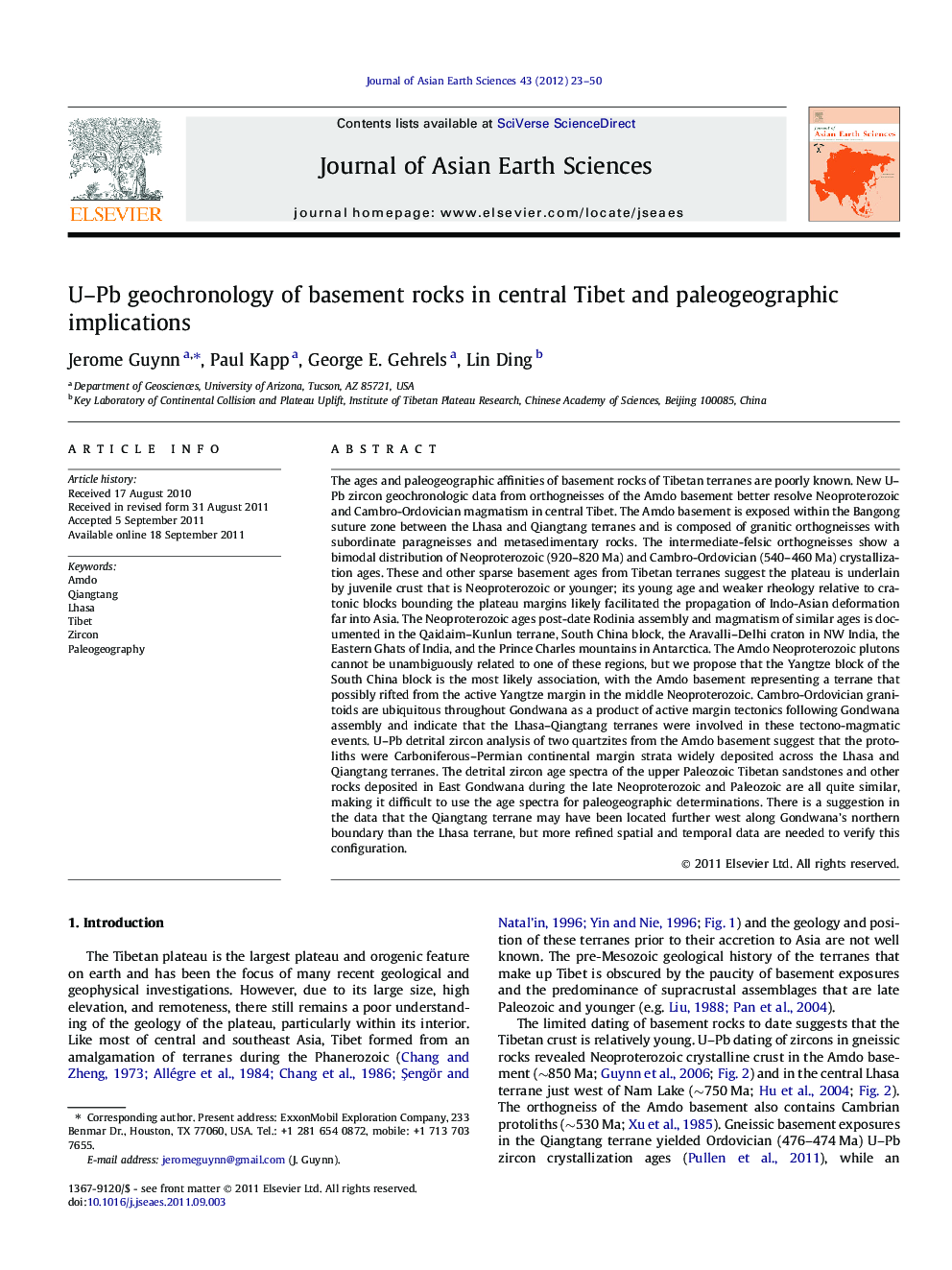| کد مقاله | کد نشریه | سال انتشار | مقاله انگلیسی | نسخه تمام متن |
|---|---|---|---|---|
| 4731620 | 1356814 | 2012 | 28 صفحه PDF | دانلود رایگان |

The ages and paleogeographic affinities of basement rocks of Tibetan terranes are poorly known. New U–Pb zircon geochronologic data from orthogneisses of the Amdo basement better resolve Neoproterozoic and Cambro-Ordovician magmatism in central Tibet. The Amdo basement is exposed within the Bangong suture zone between the Lhasa and Qiangtang terranes and is composed of granitic orthogneisses with subordinate paragneisses and metasedimentary rocks. The intermediate-felsic orthogneisses show a bimodal distribution of Neoproterozoic (920–820 Ma) and Cambro-Ordovician (540–460 Ma) crystallization ages. These and other sparse basement ages from Tibetan terranes suggest the plateau is underlain by juvenile crust that is Neoproterozoic or younger; its young age and weaker rheology relative to cratonic blocks bounding the plateau margins likely facilitated the propagation of Indo-Asian deformation far into Asia. The Neoproterozoic ages post-date Rodinia assembly and magmatism of similar ages is documented in the Qaidaim–Kunlun terrane, South China block, the Aravalli–Delhi craton in NW India, the Eastern Ghats of India, and the Prince Charles mountains in Antarctica. The Amdo Neoproterozoic plutons cannot be unambiguously related to one of these regions, but we propose that the Yangtze block of the South China block is the most likely association, with the Amdo basement representing a terrane that possibly rifted from the active Yangtze margin in the middle Neoproterozoic. Cambro-Ordovician granitoids are ubiquitous throughout Gondwana as a product of active margin tectonics following Gondwana assembly and indicate that the Lhasa–Qiangtang terranes were involved in these tectono-magmatic events. U–Pb detrital zircon analysis of two quartzites from the Amdo basement suggest that the protoliths were Carboniferous–Permian continental margin strata widely deposited across the Lhasa and Qiangtang terranes. The detrital zircon age spectra of the upper Paleozoic Tibetan sandstones and other rocks deposited in East Gondwana during the late Neoproterozoic and Paleozoic are all quite similar, making it difficult to use the age spectra for paleogeographic determinations. There is a suggestion in the data that the Qiangtang terrane may have been located further west along Gondwana’s northern boundary than the Lhasa terrane, but more refined spatial and temporal data are needed to verify this configuration.
► First pulse of granitic magmatism in Amdo during the early Neoproterozoic, 920–820 Ma.
► Second group of intruding granites are Cambo-Ordovician, 540–460 Ma.
► First magmatism age uncommon in Gondwana, the second is ubiquitous.
► Possible Amdo link with South China block in Neoproterozoic.
► Amdo quartzite protolith is Carboniferous–Permian sandstone based on detrital zircon.
Journal: Journal of Asian Earth Sciences - Volume 43, Issue 1, 1 January 2012, Pages 23–50